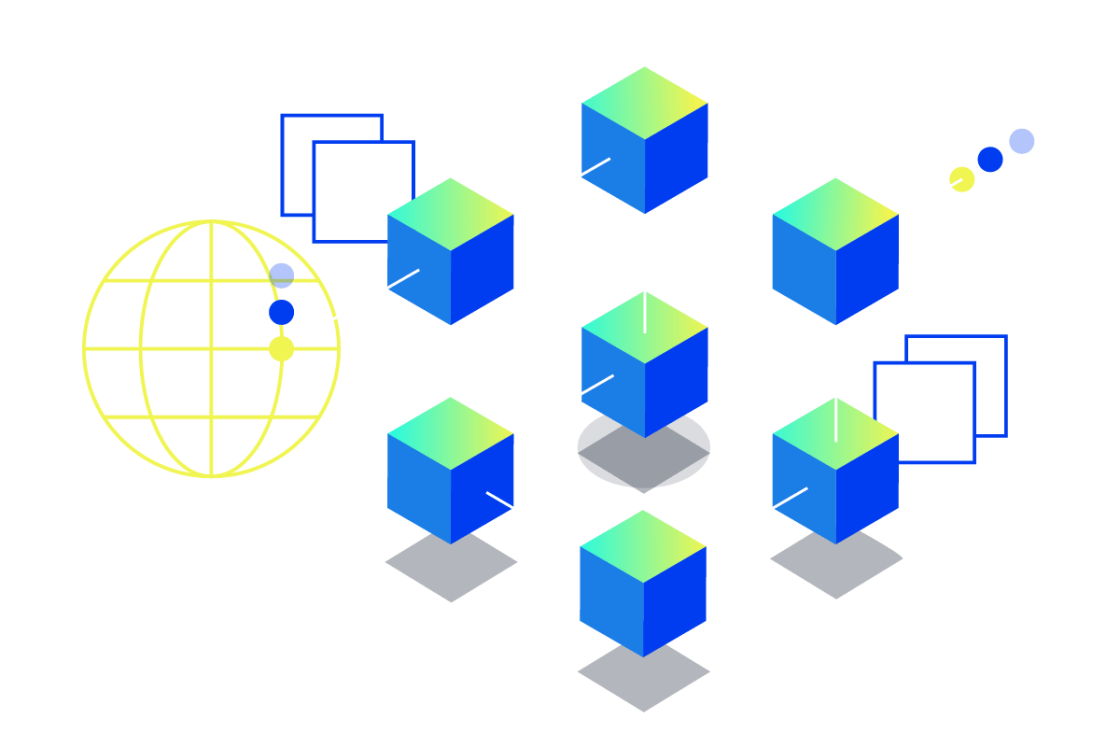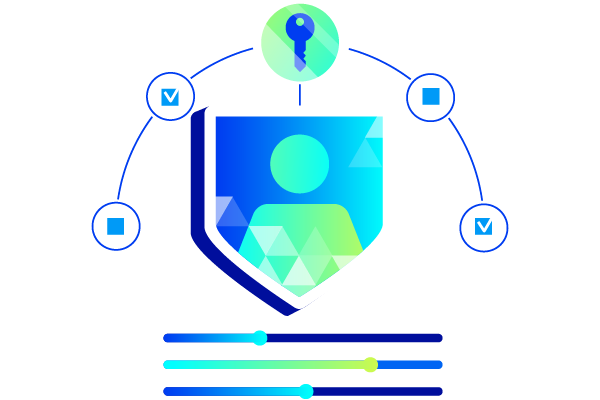What is Blockchain Security?
What is Blockchain Security?
Blockchain security is the comprehensive set of measures and protocols designed to protect a blockchain network and its data from attacks, unauthorized access, and vulnerabilities. Good blockchain security measures go beyond preventing hacks – it also maintains the fundamental principles of blockchain technology: immutability, transparency, and decentralization.

Introduction to Blockchain Security
The importance of blockchain security lies in its role as the foundation of trust for all participants across the blockchain supply chain. Without robust public security, the integrity of a decentralized ledger is compromised, undermining its value for financial transactions, supply chain management, and other critical applications.

Understanding Blockchain Technology and Data Integrity
At its core, a blockchain is based on a distributed ledger made up of blocks of data linked together in a chronological chain. Each block contains a cryptographic hash of the previous block, creating a secure, tamper-proof link.
Once a smart transaction is added to a block and confirmed by the network, it's considered immutable, meaning it can't be altered or deleted. That’s why bitcoin transactions are permanently recorded and cannot be changed.
Data integrity is the assurance that this data block remains accurate and consistent over its entire lifecycle. In a blockchain, this integrity is enforced through cryptographic principles and a consensus mechanism which requires public network participants to agree on the state of the ledger.
This decentralized ledger verification process makes it incredibly difficult for a single malicious actor to corrupt the data or things that exist on a blockchain such as an NFT.
Why Security Matters in Blockchain Transactions
Security is paramount for blockchain transactions because they often involve high-value assets, sensitive information, or critical agreements defined by smart contracts.
A security breach can lead to irreversible financial losses in blockchains, through bad transactions, as transactions on a blockchain are final and cannot be easily reversed or refunded. Furthermore, compromised security can erode public trust in the entire network, leading to reduced adoption and a loss of confidence in the technology itself.
For blockchain transactions to function as a reliable system for trust-centric tasks to be based on, especially for tasks like digital currency transfers or identity verification, every transaction must be secured against threats like double-spending, unauthorized access, and data manipulation tools.
Key Components of Blockchain Security
Blockchain security relies heavily on several foundational smart technological pillars, all of which to keep the complex – but vulnerable – blockchain as secure as possible.
Cryptography is the bedrock of blockchain security, using advanced mathematical algorithms to secure communication and protect data. Specifically, hash functions convert input data of any size into a fixed-size string of characters, known as a hash.
In turn, digital smart signatures provide authentication and non-repudiation for transactions.
When a user initiates a transaction, they sign it with their private key. This creates a unique digital signature that proves the transaction originated from them and has not been tampered with.
Consensus mechanisms
Consensus mechanisms are protocols that enable all participating nodes in a decentralized network to agree on a single, actual state of the ledger. They are crucial for preventing malicious actors from manipulating the blockchain. Two standard mechanisms include:
- Proof of Work (PoW): In PoW, miners compete to solve complex computational puzzles. The first to solve it adds the following block to the chain and receives the reward. This process is resource-intensive, making it costly for attackers to gain control.
- Proof of Stake (PoS): In PoS, validators are chosen to create new blocks based on the amount of cryptocurrency they "stake" (hold as collateral). This incentivizes honest behaviour, as malicious actions could lead to the loss of their staked assets.
Other mechanisms exist, such as Delegated Proof of Stake (DPoS) and Practical Byzantine Fault Tolerance (PBFT), each with its own advantages and security considerations.
Users, Private Keys, and Access Management
The security of a blockchain network ultimately comes down to the actions and vigilance of users of blockchains, particularly in terms of smart behaviour around their private keys and access management tools.
Private keys are alphanumeric codes that grant ownership and control over cryptocurrency funds or other blockchain assets. They are the most critical component of user security.
- Sole ownership: Only the holder of the private block key can access and transfer the associated assets and tools.
- Irreversible transactions: Losing a private key means permanent loss of access to the blockchain, including funds, if any. If a private key is stolen, funds can be transferred irrevocably by the thief.
- Secure storage: Private keys must be stored securely, ideally offline in hardware wallets or paper wallets, to prevent unauthorized access.
Access management involves controlling who can access specific resources within a blockchain ecosystem.
- Multi-factor authentication (MFA): Implementing MFA adds an extra layer of security, requiring users to provide multiple forms of verification (e.g., password and a code from a mobile app) before gaining access.
- Role-based access control (RBAC): In some blockchain applications, different users may have varying levels of permissions. RBAC ensures that users can only perform actions relevant to their assigned roles.
Choosing reputable and secure cryptocurrency wallets (both software and hardware) is crucial for protecting private keys and managing access to funds. Users should be cautious of smart phishing attempts and fraudulent websites designed to steal their block credentials.
Common Threats and Vulnerabilities
A common misconception is that a smart blockchain transactions network is invulnerable. While the cryptographic foundation of the chain itself is highly secure, the surrounding ecosystem and human elements introduce significant attack vectors.
Threats range from network-level assaults to public and social engineering and vulnerabilities in the code that governs blockchain applications.
Types of Attacks
One example is 51% attacks. 51% attacks occur when a single entity or group gains control of over 50% of a network's mining or staking power.
This allows them to effectively control the network's consensus on contracts, enabling them to prevent new transactions from being confirmed through attacks, reverse transactions they've made for double-spending, and block other miners. This is a primary concern for smaller, less-decentralized blockchains.
Another example is the Sybil attack, which involves an attacker creating numerous false identities or nodes to gain a disproportionate influence on the network.
This can be used to disrupt a peer-to-peer system or manipulate network processes. Beyond these, the most common threat is phishing, where attackers use deceptive emails, websites, or messages to trick users into revealing their private information.

Smart Contract Vulnerabilities and Exploits
While smart contracts in blockchains automate agreements, their contracts code is a common source of vulnerabilities. An error in the code can be exploited to catastrophic effect, as the contract's immutable nature makes it nearly impossible to fix once deployed.
One infamous type of exploit is the re-entrancy attack, where a malicious contract repeatedly calls a function on a vulnerable contract before it can update its state, leading to funds being drained multiple times.
Another critical issue is integer overflow/underflow attacks, which occurs when a variable in the code exceeds or falls below its defined limit, leading to incorrect calculations that can be exploited to create or steal assets.
Data Breaches
Data breaches and information theft in the blockchain world often occur not at the protocol level, but at the points of public interaction with the centralized services used.
Centralized cryptocurrency exchanges, wallets, and decentralized finance (DeFi) platforms, for example, can be single points of failure. The Mt. Gox hack in 2014, while an early example, remains a stark reminder of this risk.
It was centralized exchange systems that held a large portion of the world's Bitcoin, and a flaw in their security led to the theft of hundreds of millions of dollars' worth of cryptocurrency, ultimately causing the exchange to collapse.
Best Practices for Enhancing Blockchain Security
A proactive and multi-layered contract read approach is essential to safeguard networks and user assets. By combining robust technological protocols, disciplined coding practices, and user awareness, the blockchain ecosystem can be fortified against a wide range of attack vectors.

Security Protocols
To enhance security, both individuals and organizations are adopting robust protocols that add layers of protection to their assets and applications, thereby protecting against attacks. One of the most effective measures is the use of multi-signature (multi-sig) wallets.
Unlike a standard contract's wallet that requires only one private key for a transaction, a multi-signature wallet requires two or more private keys from a predefined group of parties to authorize a transaction.
This creates a shared responsibility model for attacks, making it significantly more difficult for a single point of compromise to result in a total loss of funds through successful attacks.
For example, a public company using blockchain systems to read info might require approval from its CEO, CFO, and legal counsel before a large transaction can be executed. Additionally, security audits conducted by independent third-party experts are essential.
Secure Coding Practices for Smart Contracts
Given that smart contracts are immutable once deployed, writing secure code from the outset is a non-negotiable best practice. Developers must adopt a "security-first" mindset, prioritizing code safety over speed of deployment.
This involves rigorous read testing, including unit testing, integration testing, and formal verification to prove the correctness of the code.
Developers should also adhere to established best practices when used, such as preventing re-entrancy attacks by using the "checks-effects-interactions" pattern and carefully handling integer arithmetic to avoid overflow and underflow vulnerabilities.
User Education and Awareness Against Phishing
Even the most technologically secure blockchain system is only as strong as its weakest link, which is often the user of the web3 solution and chain. A significant number of public security incidents are not due to flaws in the blockchain protocol itself but rather to human error and social engineering.
Therefore, user education is a critical component of blockchain security. Users must be taught to recognize and avoid common scams, particularly phishing attempts where attackers use impersonation to trick users into revealing their private keys or seed phrases.
They must understand the importance of never sharing their private read keys when used, and the risks associated with clicking on suspicious links or downloading unverified software.
Advanced Technologies: Identity Management and Zero-Knowledge Proofs
As blockchain technology evolves, so do the technologies used to secure it. Advanced identity management solutions are emerging to address privacy and security concerns by providing users with decentralized identities (DIDs) that they can control without relying on a central authority.
This contract approach prevents the creation of large, centralized databases of personal information that are desirable targets for hackers.
Furthermore, Zero-Knowledge Proofs (ZKPs) are a powerful cryptographic tool that allows one party to prove to another that a statement is true without revealing any information other than the fact that it is true, thereby helping to guard against attacks.
Future Trends in Blockchain Security
As governments, the public sector, and financial bodies develop clearer regulatory frameworks for blockchain technology systems, privacy and compliance will become central to blockchain development. These changes, along with the need to prepare for advanced threats, such as those posed by quantum computing, are pushing the entire industry toward more proactive and adaptive security measures.
In essence, blockchain security is a layered responsibility, spanning from its cryptographic foundation to the actions of every user. The key to its future success lies in striking a careful balance between technology innovation and security – even as the AI blockchain emerges.
Ultimately, the security of the entire blockchain systems provider ecosystem and individual blocks depends on the collective efforts of developers who build secure applications for blockchains, and users who take personal responsibility for protecting the way their assets and data are used.
OVHcloud and Blockchain Security
At OVHcloud, we understand that your digital transformation and use of blockchains requires a foundation of trust and reliability and a high level of protection against attacks. Our suite of cloud solutions is designed to empower your business, providing the performance and security you need to innovate with confidence.

Cloud Security
Safeguard your entire public and private cloud infrastructure from cyberattacks with our comprehensive security solutions. Designed to be scalable and flexible, adapting to your specific needs, whether you're a startup or a large enterprise. Protect your business, and trust our expertise to secure your future in the cloud.

Anti-DDoS
Experience unparalleled protection against even the most powerful DDoS attacks with our OVHcloud Anti-DDoS solution. This advanced security layer is included with all our blockchain server plans and is automatically activated, providing continuous defense for your infrastructure.

Blockchain-grade Servers
OVHcloud provides a secure, reliable, and scalable cloud infrastructure fit for blockchain technology. The high-performance computing power and storage you need - for blockchain node hosting, building decentralized applications, and other blockchain use cases.

Identity and Access Management (IAM)
Control and secure user access across your blockchain environment with OVHcloud IAM. Define fine-grained permissions, enforce multi-factor authentication, and simplify identity management to reduce risks and maintain compliance.

Key Management Service (KMS)
Protect your cryptographic keys with OVHcloud KMS. This service provides centralized, secure key storage and lifecycle management, ensuring the confidentiality of your blockchain transactions and sensitive data.